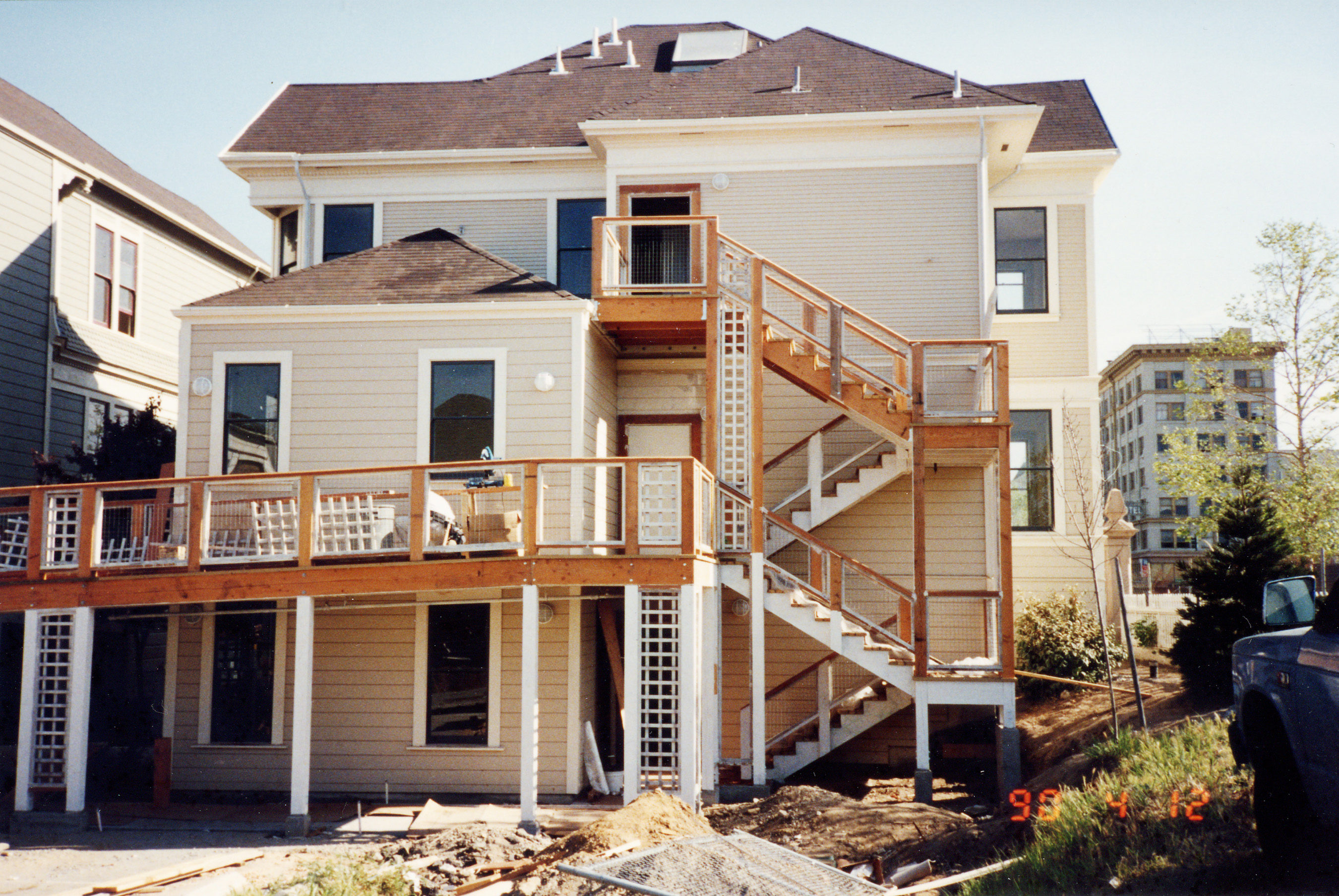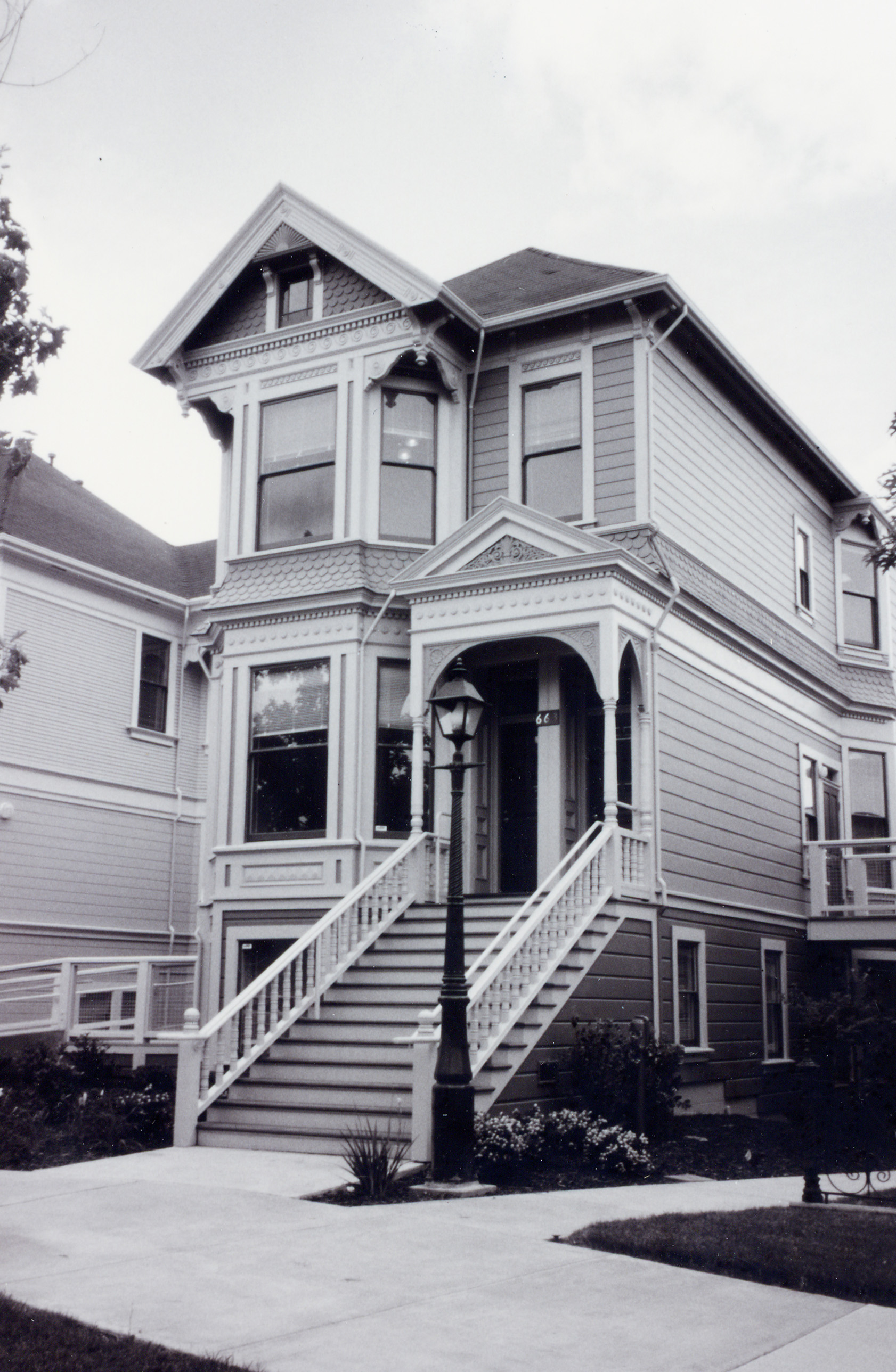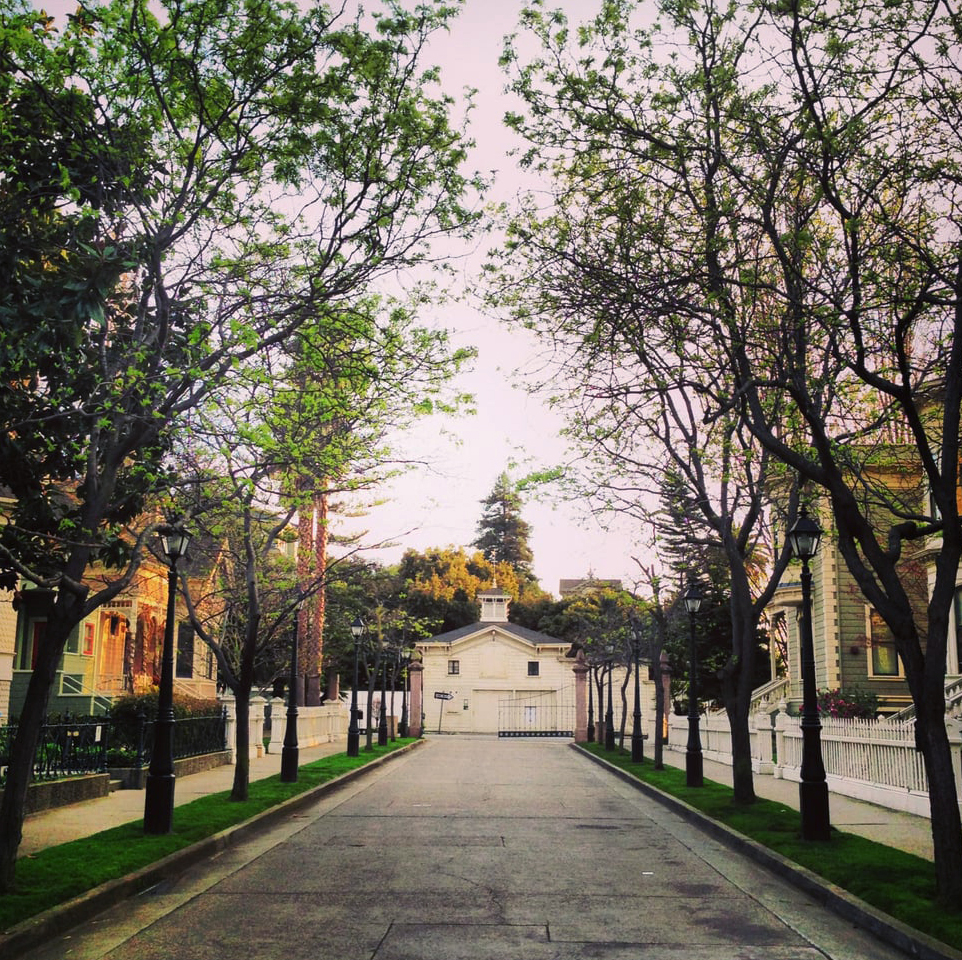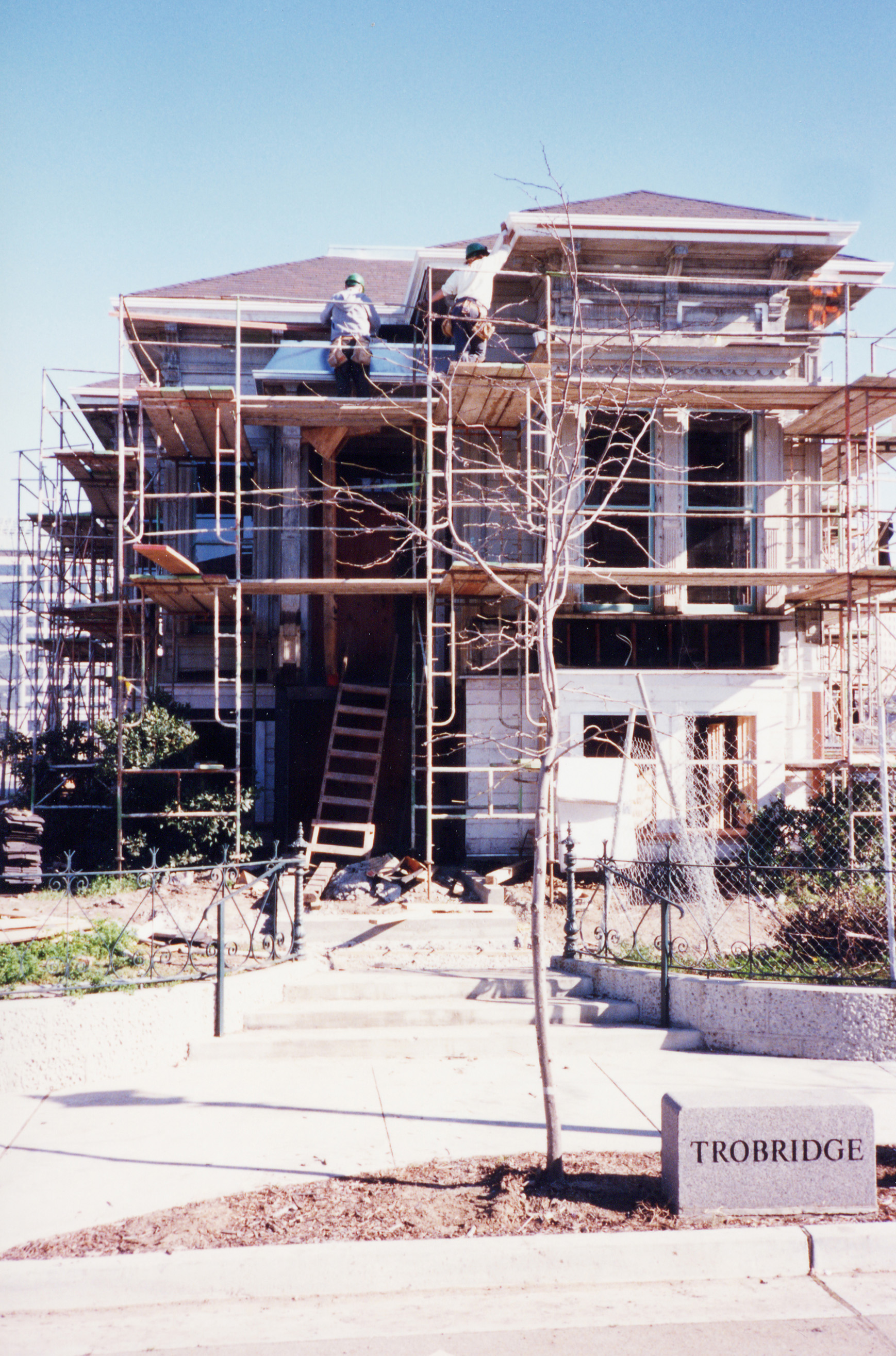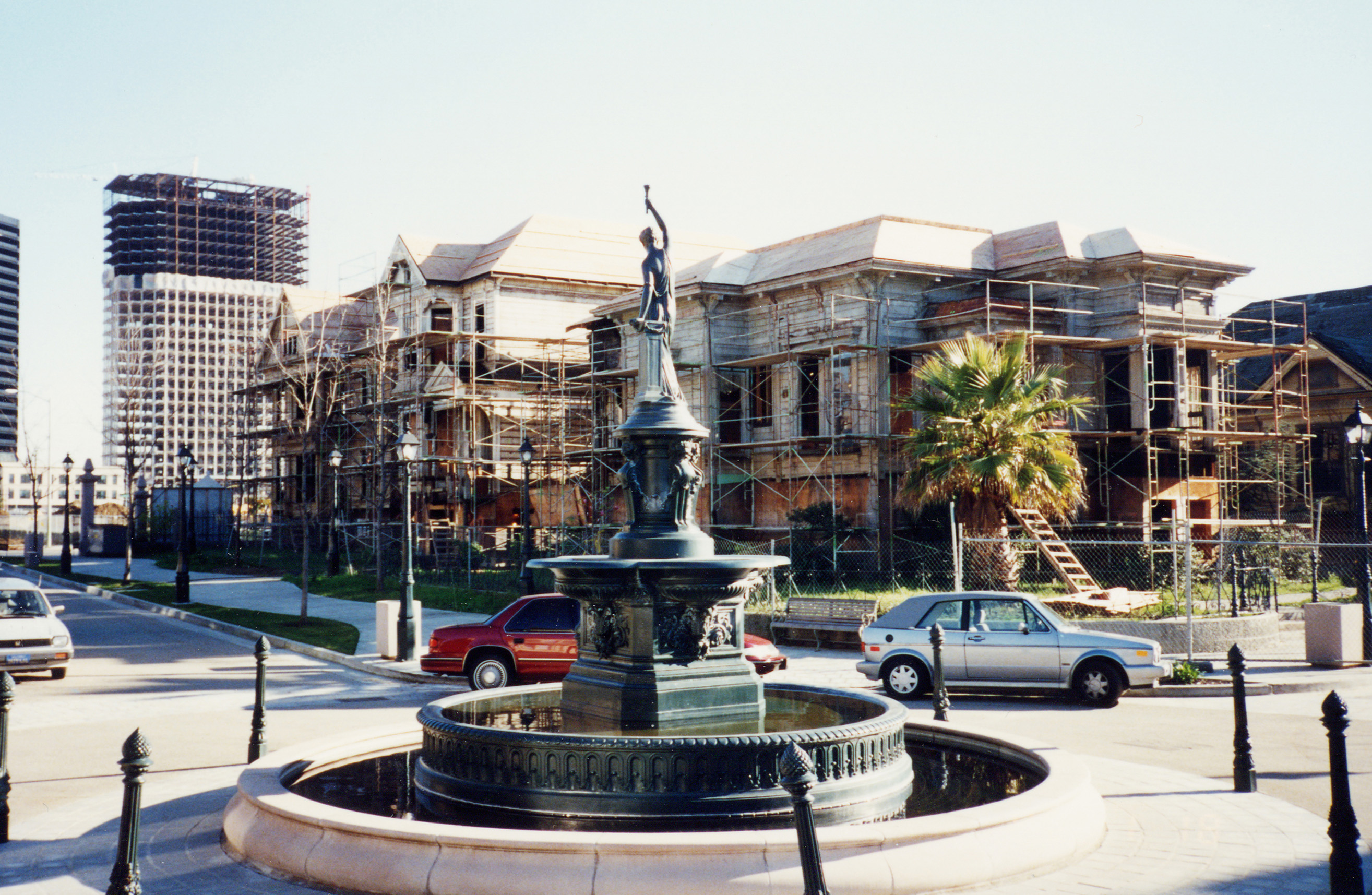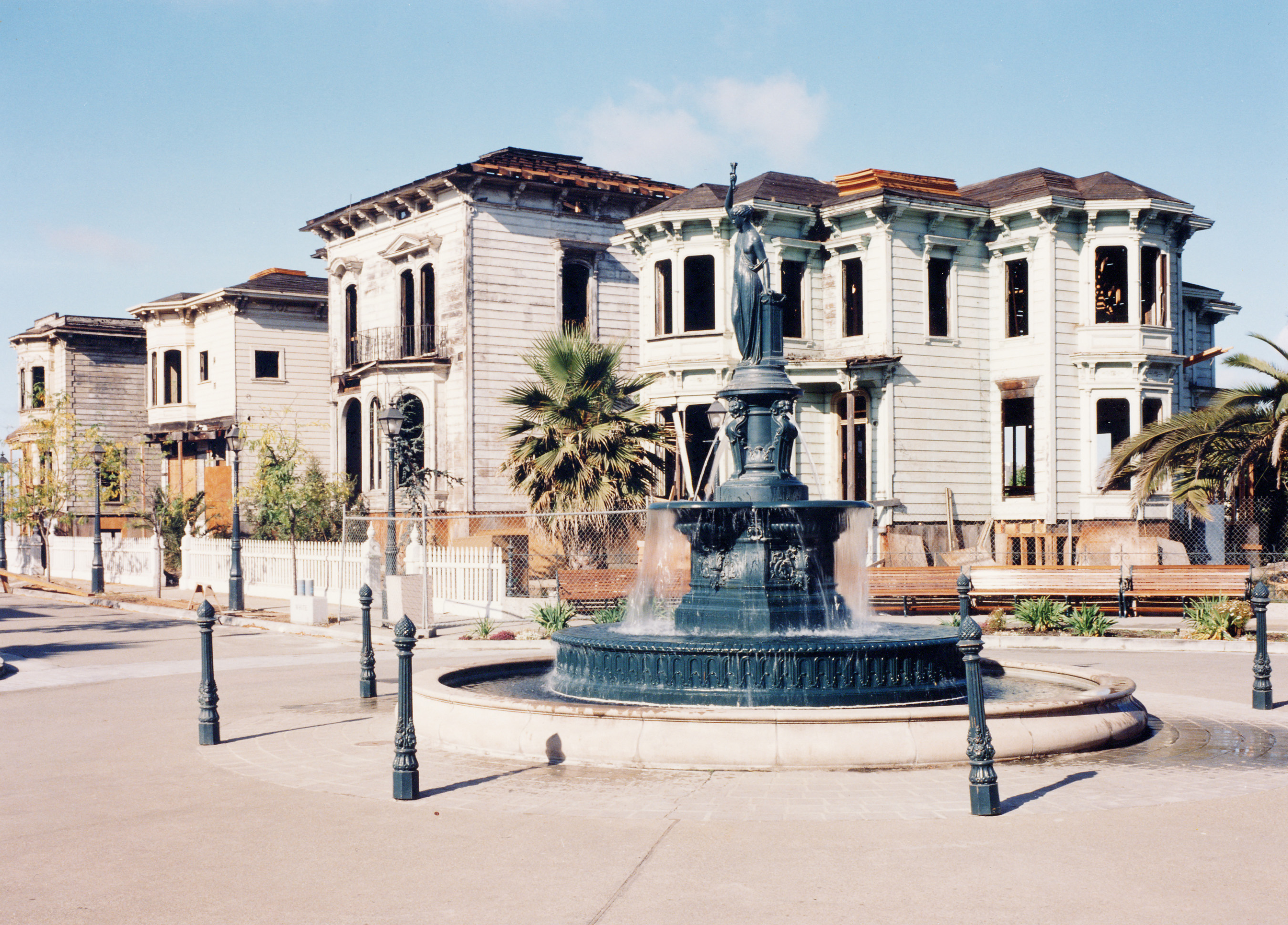The Preservation Park Story
Occupying two blocks in the heart of downtown Oakland, Preservation Park is a Victorian neighborhood, a unique collection of historic residences transformed into the City’s most innovative workplace and event center.
History
In its 125-year history, Preservation Park has experienced life cycle changes common to many urban areas. The community started out in the 1870’s as an upscale residential neighborhood made up of elaborate Victorian homes. By the 1970’s, however, many of the large homes had been subdivided into rooming houses and the neighborhood had deteriorated into what planners at the time considered “redevelopment” material. All but five of the structures on the two-block site were demolished. The construction of a new freeway adjacent to Preservation Park also threatened to destroy a significant percentage of the neighborhood’s historic Victorian homes. To preserve these historic assets, the City of Oakland created a public/private partnership to relocate the endangered buildings and to renovate the regrouped residential structures for a new life as a business neighborhood.
Today, Preservation Park does indeed have a new life: 16 turn-of-the-century buildings have been renovated, and with their facades restored, are set among manicured lawns and lush plantings, complete with Victorian park benches and street lamps. Collectively, the structures provide 55,604 rentable square feet1 different tenants will be a force for progress well into the next century...
Preservation Park is now an innovative office center for nonprofit organizations and small businesses that further cultural, social, and environmental aims. Alive with new use, the houses continue to play a vital part in the City’s history, as they have for a hundred years. The important work accomplished here by some 41 different tenants will be a force for progress well into the next century.
Preservation Park welcomes community use, where the Nile Hall, Ginn House Parlours, Robinson Classrooms, pavilion and fountain circle are readily made available for public use.
The Site
Bordering the site to the east is the high-rise federal office building, which is part of Oakland City Center, a multiblock, mixed-use, office and retail redevelopment project. Immediately west of the site is the Grove Shafter Freeway (I-980), whose construction provided eight of Preservation Park’s historic houses.
Construction of the Grove Shafter Freeway entailed truncating 13th Street, resulting in a dead end within the Preservation Park site. Finding an opportunity in this circumstance, the project designers cut a new internal street into the site (Preservation Park Way) perpendicular to 13th Street and joined the two streets with a traffic circle anchored by a historic Parisian fountain relocated from another site.
The five historic structures north of 13th Street all remain in their original locations. The 11 historic structures that were transported and relocated to the Preservation Park parcel were sited south of 13th Street, with the larger, more imposing structures situated at the exterior of the block, and the smaller structures set in, facing Preservation Park Way. Historic building transportation and siting were orchestrated and financed by the Oakland Redevelopment Agency (ORA).
Development Process
In 1982, the project’s original developer, Preservation Ventures, began renovation of the five Victorian homes native to the site, with the aim of leasing the renovated structures as commercial office space. Preservation Ventures, a real estate syndication formed by the Northern California Black Chamber of Commerce used the Federal Historic Preservation Tax Credit as a source of equity to redevelop the site’s five original structures. By 1986, however, with renovation of the five structures nearly completed, none of the office space had been leased, and it was becoming clear that the developer would not be able to complete the project. Adding to Preservation Venture’s difficulties were changes in the federal tax code and regulatory stipulations making it difficult to secure historic preservation tax credits for rehabilitation structures that had been relocated, creating a financial shortfall for the redevelopment of the 11 relocated homes.
With an infusion of additional financing from the city of Oakland as well as the U.S. Department of Housing and Urban Development, Bramalea, Inc., took over the development, management, and leasing of the project, donating its executive services to the city. Bramalea’s construction initiative, which included the renovations and refurbishment of 11 historic structures and limited on-site improvements, was completed by 1991, and the project was fully leased 18 months later. A successor to Bramalea, Inc., CMA Asset Managers, Inc., remains as management and leasing agent. In 2005, Preservation Park became a project of Preservation Park Center, Inc., a nonprofit partnership between East Bay Asian Local Development Corporation and the tenants of Preservation Park.
Early Days - Building in Process
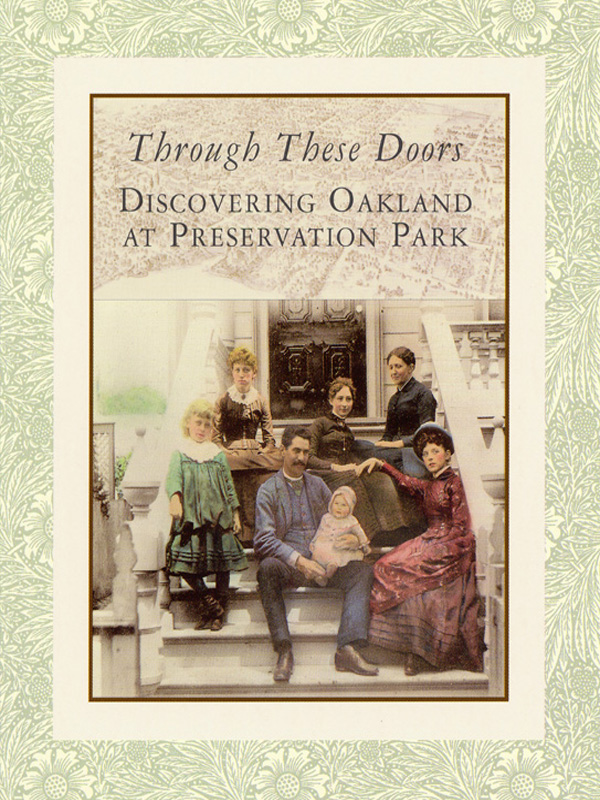
Contains numerous, beautifully displayed, never before published historic photographs reproduced in duotone and showing Oakland’s lifestyle of the time.
This book may be purchased at:
Preservation Park's Site Office
1233 Preservation Park WayOakland, CA 94612
for only $14.00.















